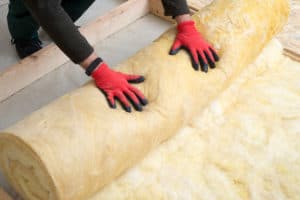How Does Insulation Affect Your AC?
The Link Between Insulation and Energy Savings
Interested in lowering your utility bills? One simple way to improve energy efficiency in your home is to add high-quality insulation. According to the experts, sealing off leaks and adding more insulation can reduce your overall energy expenses by up to 15 % a year. Besides saving money, you’ll enjoy a cooler house in summer and a warmer one in winter. It’s a “competitive edge” you shouldn’t ignore, especially if your home is older and likely has an amount of insulating material that is considered insufficient by today’s environmental standards.
To measure insulation, we use something called R-value. R-Value assesses how well this extra padding can prevent flow of heat in and out of your home. Higher R-value means more insulation and thus lower utility costs, while lower R-value means less insulation and higher bills, since your HVAC system has to work harder to provide the same level of heating or cooling. While local and state building codes usually mandate that insulation have a minimum R-value when installed in new structures, existing homes can usually benefit from having more than the minimum to improve a home’s comfort level and increase energy savings.
What Kind of Insulation Do I Need?
One good way to check out what kind of material you need to insulate your home is to visit the Department of Energy’s ZIP Code Insulation Program. This website provides a tool that can tell you where you should insulate in your home, the recommended R-values for the Pasadena area and the cost and rate of return.
Remember, insulation works most successfully when air isn’t moving around it within your walls, crawl or attic space, so it’s very important to seal up air leaks before installing it, while taking care to maintain good ventilation throughout your home. Additionally, humidity levels should always be managed throughout your indoor environment to help the insulation do its job.
There are four basic choices when it comes to purchasing the right material. Each has its own appropriate application. As mentioned above, R-factor is a critical metric in making your selection.
Fiberglass Blankets
This is best for DIY projects, and is used most often for unfinished floors, walls and ceilings.
Spray-In Foam
This is used for hard-to-reach places and existing areas where you’ll need to seal a gap inside an existing wall.
Blown-In Insulation
This can be used in a wide variety of situations, but like spray-in foam, often requires a professional to get the best results.
Foam Board, Foam Pellets
This is a go-to for unfinished foundation walls, floors, ceilings and basements.
Have questions? Contact the experts at Air-Tro for more information on the best uses and types of insulation for your home. With the right product installed correctly, you’ll enjoy more indoor comfort and greater savings immediately.
We’ve been keeping the San Gabriel Valley comfortable since 1969! Call Air-Tro today for the best ways to save energy without sacrificing indoor comfort. (626) 357-3535.

